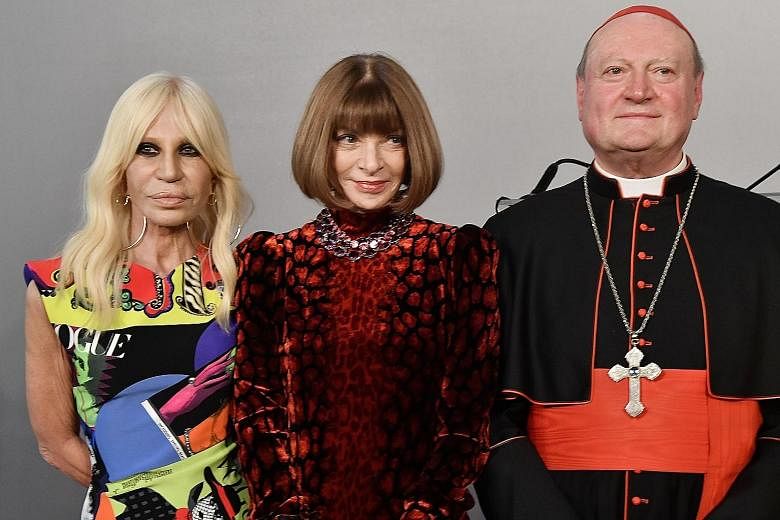ROME • Movie buffs will remember the Great Hall of the Palazzo Colonna from the final scene of 1953's Roman Holiday, when Audrey Hepburn chose royal duty over love, leaving Gregory Peck broken-hearted.
On Monday, the painting-lined gallery hosted royalty of a different sort, when some of fashion's biggest names met Vatican luminaries to preview the exhibit Heavenly Bodies: Fashion And The Catholic Imagination, which will open at the Costume Institute of the Metropolitan Museum of Art on May 10.
Designers Donatella Versace, Pierpaolo Piccioli (of Valentino) and Thom Browne joined Anna Wintour, editor of Vogue, at the Palazzo Colonna, where journalists got an early look at five of the 40 ecclesiastical garments and accessories that the Vatican is lending to the show.
Wintour wore red and black, as did Cardinal Gianfranco Ravasi, the Vatican's de facto culture minister.
Rewording German philosopher Ludwig Feuerbach's well-known phrase, "Man is what he eats", Ravasi said that the same was true of how man dresses.
"From the first pages of the Bible, God enters the scene certainly as a creator, but also as a tailor," said the cardinal, citing a passage from the book of Genesis where God made garments of skin for Adam and Eve and clothed them.
The items lent by the Vatican feature exquisitely crafted clothing and accessories, with intricate patchworks of gold and silver thread embroidery as well as bejewelled tiaras and mitres.
Ravasi noted that the liturgical vestment "represents, above all, the transcendent dimension, the dimension of the religious mystery, and that's why it is ornate, because that which is divine is considered splendid, marvellous, sumptuous, grandiose".
He cited, as an example, the "marvellous chasubles", or outermost vestments worn by clerics during mass, that Matisse designed for the Chapel of the Rosary in Venice and that are today housed in the Vatican Museums' collection of modern religious art.
"When Picasso saw them, he said, 'These aren't sacred vestments, they are butterflies that fly in the sky of God,'" Ravasi said. "And that is the real meaning of the sacred vestment."
Andrew Bolton, the Costume Institute's curator in charge, said some might consider fashion to be "an unfitting or unseemly medium by which to engage with ideas about the sacred or the divine".
"But dress is central to any discussion about religion," he added, and "religious dress and fashion - at least in terms of their presentation - are both inherently performative".
NYTIMES

